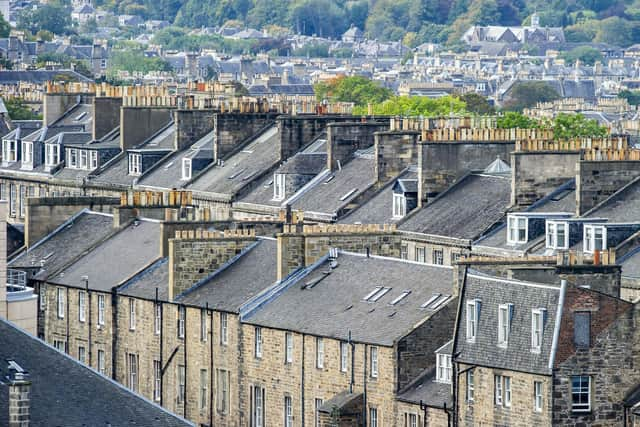Edinburgh housing: RAAC found in dozens of Edinburgh social homes sparking safety fears
and live on Freeview channel 276
Dozens of social homes in Edinburgh have been identified as containing potentially dangerous cheap “crumbly” concrete.
It has emerged that at least 43 homes have been identified as being fitted with Reinforced Autoclaved Aerated Concrete (RAAC) in two areas of the city, according to a freedom of information request. The City of Edinburgh Council identified the material in houses that were constructed in 1965. Council bosses said they are now carrying out surveys on all our domestic properties. But it has sparked safety fears and prompted calls for a national RAAC register and a robust inspections programme for all housing that could be affected.
Advertisement
Hide AdAdvertisement
Hide AdCouncil chiefs said that the 43 homes have been refurbished between 2011 and 2015 with new roof coverings and thermal upgrading ‘to encapsulate the RAAC slabs to maintain the condition of the building fabric’. The lifespan of this is expected to be around 25 years.


It’s claimed that structural engineers have said there is ‘no immediate concern’ and council bosses said the material will be monitored regularly. The RAAC crisis has seen temporary classroom units drafted into school playgrounds and NHS buildings named as being at “high risk” of having the dangerous concrete too.
The potentially dangerous concrete was used to construct roofs, walls and floors from the 1960s to the 1990s as a cheaper alternative to conventional concrete. More than 250 NHS buildings in Scotland are suspected of including the concrete, which it is feared can collapse without warning. Much of it is fitted into flat roof areas of buildings that are difficult to access.
Housing campaigners have demanded ministers order councils and housing associations to check their properties to find out whether they were built using RAAC. Experts estimate as much as 10 per cent of council houses across the country could have been built using the material. Safety warnings have been issued surrounding buildings with RAAC since the 1990s.
Advertisement
Hide AdAdvertisement
Hide AdLothian MSP Miles Briggs said: “It is very concerning that RAAC has been identified in a number of social homes in Edinburgh. Edinburgh is host to a number of older buildings many of which are in need of constant maintenance. Given the news that RAAC is often found in places difficult to access, such as flat roofs, this presents a problem and the fact that building stock fitted with RAAC is susceptible to structural failure is a serious issue that needs to be resolved.
“It is critical that we see a National RAAC Register and an urgent, thorough inspection regime developed to help monitor and support households. I have called on Ministers to act and provide resources to local Councils and NHS Lothian to provide. I have raised these concerns on the Scottish Parliament’s Local Government Committee and will be working to make sure a long-term inspection regime is put in place and any remedial works that are needed are urgently carried out.”
A council spokesperson said: “A very small number of council homes were identified as being affected by RAAC a number of years ago. Remedial action to address structural concerns where necessary was taken at that time. We’ll continue to inspect buildings and publish updates relating to RAAC on our website.”
Comment Guidelines
National World encourages reader discussion on our stories. User feedback, insights and back-and-forth exchanges add a rich layer of context to reporting. Please review our Community Guidelines before commenting.